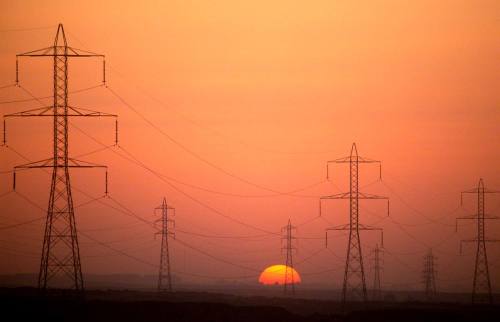
A conversation that often comes up is when one of my students taking my BPSOP class tells me that according to their Histogram, the exposure was the correct one. During one of my “Stretching Your Frame of Mind” workshops, I’ve walked up to one of my fellow photographers, when there was a few seconds of great light still left, and saw him/her standing there looking at that worthless chart on the back of their camera…the Histogram!!!
EGADS!!! YIKES!!! WHAT???
So let me get this straight. You’re telling me that you need ( or should be doing) to look at something the Digital Gods (those would be the geeks) created with the sole purpose of letting you miss what could have been the best photo you’ve ever taken? REALLY???
When I do encounter that problem during one of my workshops, I always tell people to get that off their camera…why? Because you don’t need it to create good photos. It’s going to do more harm than good, and that’s the reality of it all. The absolute last thing I want to be doing is to have a camera ( a machine) telling me if a photo is ready to be taken. I want and can decide that all by lonesome…thank you very much!
Ok, so it’s not all their fault. The majority of my students didn’t begin their passion for photography until after the advent of the digital world. They only know what they’re led to believe, and they’re led to believe that in order to take good photos you have to pay attention to Histograms, and those ridiculous blinking areas on the back of your camera telling you that you’ve clipped the highlights.
All I can say is don’t stand there and miss the shot, be a student of light and know to take matters into your own hands…How? By bracketing. By bracketing you’ll be able to get the exposure in the camera without needing to look at a Histogram. By putting your brackets next to each other on your monitor you’ll start to realize when you’ll need to underexpose more and overexpose more. Try setting your camera to bracket automatically then you can study the different exposures and have a clearer idea about shutter speed/aperture combinations.
The above photo was taken without the help of a Histogram. If I had been looking at the back of my camera waiting for it to tell me that it was ok to shoot, I would have missed the shot.
🙁
Visit my website at: www.joebaraban.com, and check out my 2016 workshop schedule at the top of this blog. come shoot with me sometime.
I have added a new workshop to my 2016 schedule. On September 21st, ten photographers will get together with me at my evening “meet and greet” to begin a fantastic five-day workshop in New York, New York. Check out my description at the top of this blog. Come shoot with me.
Keep those photos and questions coming to: AskJoeB@gmail.com, and I’ll send you a video critique.
JoeB





Shoot RAW+Aperture priority mode+find your “sweet” exposure first (with also the aid of the histogram) thus the exposure compensation = you are good to go without bracketing.
Having said that, I agree, in life and in photography there is more than mid-tones! 🙂
You miss the ENTIRE point!
Just last week I walked up to a student at the Maine workshop who stopped shooting this great light right before sunset…why?
Because the damn Histogram told her she was about to overexpose the highlights. When I showed her what she might get if she
does, she took that stupid diagram off her ICD screen.
There is no such thing as a “sweet exposure” and it certainly can’t be achieved your way. The odds of getting the “right” exposure for what you’re trying to do at that moment with one click…without sitting in front of a computer is slim at best.
I’ll bracket, choose my own exposure, and be a master of light. So far it’s done me well.
JoeB
In film days when I started, there was not a histogram and I could not afford to bracket…now I check the ‘silly” histogram “very quickly “to make sure I have the exposure within the ballpark. You say just bracket and move on while the light is good and fading so you will capture more images and have more images to learn from. Hence start in M with a “standard” exposure and bracket…correct?
Tom,
Exactly!!!
I’ve been shooting for almost fifty years, and I can tell you that the great shots, the kind of shots I’m after, depend (usually) on great light. Light is a fleeting commodity, and it can come and go in seconds. If you’re not paying CLOSE attention to your surrounding, as in looking at some silly histogram, you stand a very good chance in missing it.
Having said that, if someone leans toward the “techie nerd” frame of mind he or she might be more interested in studying some bar graph. The following definition is what gets one of these types of people really excited:
“A histogram is a graphical representation of the pixels exposed in your image. The left side of the graph represents the blacks or shadows, the right side represents the highlights or bright areas and the middle section is mid-tones (middle or 18% grey). How high the peaks reach represent the number of pixels in that particular tone. Each tone from 0-255 (o being black and 255 being white) is one pixel wide on the graph, so imagine the histogram as a bar graph all squished together with no spaces between each bar”.
Seriously?
JoeB
T